FOCUS, Palm: Local business leaders need to step up now
COMMENTARY, Brack: Governor’s races pit establishment versus grenade-throwers
IN THE SPOTLIGHT: Morris Financial Concepts
PHOTO ESSAY, Bledsoe: Alaskan cruise
GOOD NEWS: Owlbert to unveil new book
WHAT WE LOVE: Long, languid weeks of summer
FEEDBACK: On Wentworth’s authentic wisdom, ferries and bridges
MYSTERY PHOTO: A gazebo or maybe something else?
S.C. ENCYCLOPEDIA: South Carolina’s governors
CALENDAR, June 11+: Primary elections, jazz, yoga, more
FOCUSFOCUS, Palm: Local business leaders need to step up now
By Fred Palm, contributing editor | The Lowcountry is a dysfunctional area because in many situations, the business community organizes “business councils” that serve as sounding boards and advocates for enlightened public policy for the common good to achieve a turnaround. Unfortunately, they’ve been mostly dormant and now is the time for our business leaders to step forward to contribute community service for the common good. Here is why.
 The fiction that ‘growth is good’ and that ‘growth pays for itself’ is exposed in Summerville for the shams that they are. All elected politicians know them to be big lies. Only some have the courage to give voice to truth and the reality of numbers – and to come up with workable solutions.
The fiction that ‘growth is good’ and that ‘growth pays for itself’ is exposed in Summerville for the shams that they are. All elected politicians know them to be big lies. Only some have the courage to give voice to truth and the reality of numbers – and to come up with workable solutions.
We should applaud and support the efforts of those elected officials who seek to come to terms with this poor hand left us by growth deceptions voiced by current and former elected officials. The unfortunate truth that the current situation has led to this maxim: You can pay the impact fee now or later — in the form of taxes — to build and put it place the reality of what you hoped would be here and by all reasonable standards- should be here; schools, roads, flood protection, and yes, the Lowcountry lifestyle. You have been deceived if you believed we could keep this lifestyle without paying the piper.
We lack the basics of municipal life because of the failed free lunch low-tax policies that gets repeated as if they are true and beneficial. Our taxes are low because they were given as an economic development incentives to attract business and by our foregoing the basics, to support the myth of low taxes. The jig is up in Summerville now as it is in or soon will be in other cities and towns in Berkeley, Charleston and Dorchester counties.
We are in an all-hands-on-deck situation that now needs many good hands, especially from the quiescent business community. You can fatten your bottom line, staying silent with our tax money that we gave in the form of ‘incentives’ made possible by us deferring our hopes and dreams. Had the taxes been calculated to pay for the needed infrastructure, they would have been spent on real infrastructure. You too have been deceived as we.
The educational infrastructure was grossly underfunded for years, and continues to be. That is why you cannot find potential employees. There or no real plans to fix this. Expect more poor performing students entering the labor force in our foreseeable future.
Potential employees that you offered a position to cannot think of taking the job offer because of the horrendous commuting time to arrive on time every time. Your labor pool is actually shrinking with the passage of time spent dealing with inadequate roads, despite more people moving in. This is another indicator of major dysfunction.
 We have a Charleston County Council that insists on building a $1 billion Interstate highway, not knowing where the funds will come from but willing to inherit the entire risk for inchoate and stale estimates, unadjusted for inflation, that will require reengineering to accommodate high water and all the construction overruns risks of building in a swamp. This Interstate extension does nothing to address the county wide transportation needs and will make traffic worse. By accepting this massive, mostly funded county public works project normally done by the state, our entire community precludes any other funding for roads and flood containment for years. Add to this many of the current sections of I-526 used for commuting will go underwater at high tide, nuisance floods, king tides and torrential downpours that are expected to increase. It’s just more dysfunction in our forecast.
We have a Charleston County Council that insists on building a $1 billion Interstate highway, not knowing where the funds will come from but willing to inherit the entire risk for inchoate and stale estimates, unadjusted for inflation, that will require reengineering to accommodate high water and all the construction overruns risks of building in a swamp. This Interstate extension does nothing to address the county wide transportation needs and will make traffic worse. By accepting this massive, mostly funded county public works project normally done by the state, our entire community precludes any other funding for roads and flood containment for years. Add to this many of the current sections of I-526 used for commuting will go underwater at high tide, nuisance floods, king tides and torrential downpours that are expected to increase. It’s just more dysfunction in our forecast.
We have a major Pulitzer Prize newspaper that advocates tree plantings and accepts wholly insufficient funding for flood prevention that borders on irresponsibility. It suggests a pittance level of funding is better that nothing, despite the fact that the scope of a regional response to massive flooding does not exist and cries out for attention. Thimbleful advocacy for doing much too little is unacceptable to advance the public debate on what to do about present and future high water.
Business leaders, you are stuck in a landscape totally lacking flood protection. Instead, you are led by politicians selling us the fool’s errand to go and find funding, while nothing or too little gets done. Meanwhile, the bond raters are looking for a flood plan that holds water to assess the risk to their repayment streams and the protection that claims on assets, should the county or the city of Charleston enter into financial collapse and oversight monitoring. Higher interest rates and/or shorter terms for capital investments are in our forecast and reduce the flexibility we need now.
Even if your assets are on high ground, your current and future employees are not. They are involved in securing their families and not your mission. Now is the time for business leaders to step forward to contribute their community service for the common good.
- Have a comment? Send to: editor@charlestoncurrents.com
BRACK: Governor’s races pit establishment versus grenade-throwers
By Andy Brack, editor and publisher | Don’t look for too many surprises Tuesday in what’s been a pretty lame set of gubernatorial primaries.
 Unless something surprising happens before the June 12 Republican and Democratic primaries, incumbent Gov. Henry McMaster will lead four challengers and be forced into a runoff while Democratic state Rep. James Smith of Columbia may just muster enough votes to win the party’s nomination outright.
Unless something surprising happens before the June 12 Republican and Democratic primaries, incumbent Gov. Henry McMaster will lead four challengers and be forced into a runoff while Democratic state Rep. James Smith of Columbia may just muster enough votes to win the party’s nomination outright.
This wouldn’t necessarily be a bad result. Why? Because in the long term, state residents would become the ultimate victors.
McMaster and Smith are seasoned leaders who know how to get things done across the aisle. In short, they’re part of the establishment, unlike other candidates who are pumping hundreds of thousands to millions of dollars into efforts as they run against the legislature to try to win the state’s top elected position.
The problem with continuously launching verbal grenades against the “corruption” and good-old-boys of Columbia might sound good now to voters, but it doesn’t work well after an election for anyone who wants to get things done. In a legislatively-controlled state. Do you really think state senators and representatives are going to open their arms to a new governor who has spent months talking trash about them?
Two recent anti-legislative governors provide more than enough examples. During eight years of office, former Gov. Mark “No” Sanford tried to cut state government time and again. Throughout his tenure, he nixed ideas of investing in infrastructure, such as maintaining college campuses. Since 2002, the state hasn’t had a bond bill – even though cheap interest rates and a good credit score make it fiscally sound to borrow, make improvements now and pay pack over time. Meanwhile, state colleges and universities have identified $2.5 billion in deferred maintenance and infrastructure needs.
Former Gov. Nikki “No Squared” Haley early approached state government in a Sanfordian manner, saying no time after time to improving state roads by boosting the gas tax – even though polls showed an overwhelming number of South Carolinians would pay more at the pump to fix potholes and smooth congestion. Boosted highway coffers didn’t come until Haley went to New York to serve as the nation’s ambassador to the United Nations.
 In the Republican primary, McMaster and former Lt. Gov. Yancey McGill of Kingstree represent the establishment. Catherine “Buzzkill” Templeton of Mount Pleasant and Greenville businessman John Warren, who has put millions of his own money into the race, are so blinded by rooting out corruption that the rest of their campaign rhetoric – the stuff about making government work – is thin, at best. McGill, like current Lt. Gov. Kevin Bryant of Anderson (who hops back and forth between the establishment and renegades) are at the bottom of polls. Prediction a week out: McMaster will be in a runoff with Warren.
In the Republican primary, McMaster and former Lt. Gov. Yancey McGill of Kingstree represent the establishment. Catherine “Buzzkill” Templeton of Mount Pleasant and Greenville businessman John Warren, who has put millions of his own money into the race, are so blinded by rooting out corruption that the rest of their campaign rhetoric – the stuff about making government work – is thin, at best. McGill, like current Lt. Gov. Kevin Bryant of Anderson (who hops back and forth between the establishment and renegades) are at the bottom of polls. Prediction a week out: McMaster will be in a runoff with Warren.
On the Democratic side, Smith faces Florence tax lawyer Marguerite Willis and Charleston consultant Phil Noble. Smith, long considered the frontrunner, has served two decades in the S.C. House of Representatives and has respect among Democratic and Republican state lawmakers. Willis, who wants the state to deal with endemic issues like poverty, talks about ending the old way of doing things. Noble, who doesn’t have enough money to advertise on TV, blasts “plantation politics” and the gun culture as South Carolina’s version of Bernie Sanders. Smith, not the most charismatic candidate on the stump, has a seasoned team with an organized playbook and big endorsements that might get them over the hump to win the primary without a runoff. It will be close. Otherwise, he’ll face Willis on June 26 in a primary runoff.
South Carolina needs to get off the bottom of all sorts of lists where government can make a difference. It needs to improve access to health care, pay teachers more, invest in higher education and roads, and deal with energy and natural resources in new ways. What it doesn’t need is another leader at the top who blames the legislature for all wrongs – even though state lawmakers have a lot of the blame to shoulder.
South Carolinians need to work proactively for a better future, not be mired in finger pointing and nays.
MEET THE CANDIDATES
Read what Democratic and Republican gubernatorial candidates said in their own words in op-eds published in recent weeks by our sister publication, Statehouse Report:
- GOP, McGill: South Carolina is worth fighting for(April 19)
- GOP, Templeton: “The called me the ‘Buzzsaw’”(May 3)
- GOP, Warren: “We deserve better from our leaders” (May 10)
- DEM, Willis: People run for office for lots of reasons(May 16)
- DEM, Noble: “It is never too late to do what we know is right” (May 21)
- GOP, McMaster: Fighting to achieve our full potential (May 25)
- GOP, Bryant: S.C. still awaits true ethic reform (May 31)
- DEM, Smith: Let’s move S.C. forward for everyone (June 8)
- Have a comment? Send to: editor@charlestoncurrents.com
SPOTLIGHT: Morris Financial Concepts, Inc.
 The public spiritedness of our sponsors allows us to bring Charleston Currents to you at no cost to readers. Morris Financial Concepts, Inc., is a nationally recognized, fee-only financial consulting firm that helps you identify and align your resources, values and goals to achieve an enriched life.
The public spiritedness of our sponsors allows us to bring Charleston Currents to you at no cost to readers. Morris Financial Concepts, Inc., is a nationally recognized, fee-only financial consulting firm that helps you identify and align your resources, values and goals to achieve an enriched life.
We do not accept commissions or compensation related to the products and service we recommend. Our counsel is based solely on what we believe is best for each client.
- Learn about founder and Charleston Currentscolumnist Kyra Morris and more about the consultancy at: Morris Financial Concepts, Inc.
PHOTO ESSAY: Picturesque Alaskan cruise
Charleston photographers Cynthia Bledsoe and Michael Kaynard took a relaxing Alaskan tour and cruise last month and came up with some great photos. The week-long tour started in Seattle and made stops at Juneau, Glacier Bay, Sitka, Ketchikan and Victoria (British Columbia) before returning to Seattle.
Enjoy these photos by Bledsoe:
These v-shaped sculptures on a dock at Juneau, Alaska, are to represent flukes of a whale, Bledsoe says. “They are made of solid steel rods that were hand-bent around a skeleton of tubes and plates to the outer skin. Each sculpture – there are about 10 of these – weighs 1,500 pounds. These were a public art project from the new 54 million berth constructed with 1 percent set aside for public art, from dollars derived from cruise ship head fees, and dock and harbor fees.”
The Red Dog Saloon in Juneau began during the golden age of mining. It’s the oldest saloon in Juneau. Contributing photographer Michael Kaynard is shown at right.
These bags are on display at the Sheldon Jackson Museum in Sitka. “The collection is extensive and includes items from Eskimo, Aleut, Athabascan and Northwest Coast cultures. Masks, carvings, tools and boats from all the cultures are exhibited here. Highlights include an Aleut baidarka (skin kayak) and Tlingit dugout canoe.”
This totem is in Saximan Village in Ketichan. “The Totem Heritage Center was established to preserve endangered 19th century totem poles retrieved from uninhabited Tlingit and Haida village sites near Ketchikan,” Bledsoe said..
This 1893 building was home to the Canadian Board of Trade in Victoria, B.C.
This interesting sign display is found in Victoria.
- Have a comment? Send to: editor@charlestoncurrents.com
GOOD NEWS: Owlbert to unveil new book at library
Staff reports | Owlbert, the mascot for Charleston County Public Library, will unveil a new book, “Owlbert Finds a Home” during a special storytime event 10:30 a.m. June 14 in the Main Library’s children’s area.
The fun story, which was written and illustrated by library staff members, explains how Owlbert ended up living at the library and becoming its mascot. On Thursday it will be read aloud by the story’s illustrator, Liz Wuestefeld.
And Owlbert will be on hand as a special guest and will provide free autographed copies of the book to all attendees.
In other Good News.
Anniversary commemoration. Fort Sumter National Monument will commemorate the 242nd anniversary of the Battle of Sullivan’s Island with special programs on June 23 and June 24 at Fort Moultrie. Visitors of all ages are invited to explore the American Revolution through the life of a soldier in South Carolina. Musket demonstrations by volunteer reenactors from the 2nd South Carolina Regiment, National Park Service volunteer reenactors and staff will take place at 10 a.m. and 2 p.m. on Saturday and at 10 a.m. on Sunday while artillery demonstrations will take place at 11 a.m. and 3 p.m. on Saturday and at 11 a.m. on Sunday. Fort Moultrie is located at 1214 Middle Street, Sullivan’s Island, South Carolina. film. An entrance fee is normally charged for the park. More info: www.facebook.com/FtMoultrie
New mobile testing van. Palmetto Community Care (formerly Lowcountry AIDS Services) is hitting the road this summer with its new mobile testing van to make it easier for Charleston area residents to get a free, confidential HIV test. This van – aimed at reaching rural and high-needs communities – was made possible by a $50,000 grant from the Elton John AIDS Foundation.
In January 2018, Palmetto Community Care recorded the most positive HIV tests in its history. Of those who came in for a free HIV test in January, seven tested positive for HIV. Underscoring the issue that HIV is disproportionately impacting youth, all seven of those people were under the age of 30. In all of 2017, 20 people tested positive for HIV at Lowcountry AIDS Services. The agency tests an average of 1,600 people annually. More on scheduled stops and other information: palmettocommunitycare.org.
Hurd portrait. The Charleston County Public Library will unveil a portrait of Cynthia Graham Hurd, which will be dedicated in honor of the 31-year library employee who died in the Emanuel AME church shooting in June 2015. Hurd was manager of the St. Andrews Regional branch at the time of her death. An unveiling ceremony will take place noon June 20 at the Cynthia Graham Hurd/St. Andrews Regional Library in West Ashley. Refreshments will be served and the program will be followed by a special event, an ice cream sundae bar at 1 p.m., which is part of the branches Kindness Week, organized in memory of Cynthia Graham Hurd and her philosophy to always be kind. The Charleston Friends of the Library funded the official portrait.
Big pledge. Synovus/NBSC last week announced a $250,000 pledge to the International African American Museum bringing it closer to raising the private money it needs to funding the project.
WHAT WE LOVEWHAT WE LOVE: Long, languid weeks of summer
Enjoying the summer? Here’s what Chuck Boyd of Hanahan loves about the Lowcountry:
![]() “I recall the long, languid weeks of summer in the 1940s when I would stay with my grandparents on Folly Beach, a long 12 miles from our rented home downtown.
“I recall the long, languid weeks of summer in the 1940s when I would stay with my grandparents on Folly Beach, a long 12 miles from our rented home downtown.
“Many blocks from the ocean, the beach house was on a crest overlooking the brown marsh edging the Folly River. I was told that in 1939, the year I was born, the two bodies of water almost met as storm tides pushed water across the island from both direction.
“I was there the summer Center Street was paved, covering the sharp-edged crushed oyster shells that hurt my bare feet when I sauntered on the main street toward the ocean.”
Tell us what you love. Send a short comment – 50 words to 100 words – that describes something you really enjoy about the Lowcountry. It can be big or small. It can be a place, a thing or something you see. It might the bakery where you get a morning croissant or a business or government entity doing a good job. We’ll highlight your entry in a coming issue of Charleston Currents. We look forward to hearing from you.
FEEDBACKFEEDBACK: On Wentworth’s wisdom, ferries and bridges
Solid, authentic wisdom, Marjory. Those young graduates were fortunate to get to hear it. Keep up your good work of bringing light into many lives.
— Bruce Jayne, Charleston, S.C.
Look at reestablishing ferry system
To the editor:
It seems to me that solving the transportation problems in Charleston and its surroundings involves an active look at reestablishing a ferry system to take the burden off bridges, with park-and-ride lots at either end. According to the article, we have a history of ferry regulations which could be updated. Probably this should be a public utility, maybe an offshoot of CARTA, but analysis of options including permanently operating ferries and ferries that could be deployed during a bridge failure or crisis surely would be smart.
One other observation: The Silas Pearman Bridge would indeed have been an aesthetic challenge to the view of the new Cooper River (Ravenel) Bridge, but it would have solved the recent problems with congestion after the Don Holt debacle had it been in service. It was only put up in the 1960s and surely had a life span much longer than the Grace Memorial Bridge, opened in 1929. After all, the bridges connecting Manhattan and Brooklyn still function well and are a lot older in most cases. What public servant made the terrible decision to take down a functioning bridge that could have been maintained in use and avoided the icicle crises and the recent problems with traffic because of failures on the Wando River bridge? I think we can expect future problems due to bridge design.
And where was the pre-design oversight and post-construction inspection of the Wando bridge that a citizenry who pays the bills has every right to expect?
Public transportation planning needs to anticipate glitches and unexpected failures and have planned for options. Keeping older bridges in functioning condition and using ferries as long term and emergency solutions to traffic problems seems to make sense to me.
— Judy Hines, Charleston, S.C.
Send us your thoughts: We love hearing from readers. Comments are limited to 250 words or less. Please include your name and contact information. Send your letters to: editor@charlestoncurrents.com. | Read our feedback policy.
MYSTERYMYSTERY PHOTO: A gazebo or maybe something else?
This week’s mystery surely looks like a gazebo, but it’s probably something else. What and where? Send your best guess – plus your name and hometown – to editor@charlestoncurrents.com. In the subject line, write: “Mystery Photo guess.” (If you don’t include your contact information, we can’t give you credit!)
Last issue’s mystery
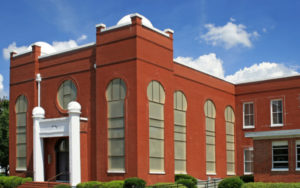 Avid reader and photographer Bill Segars of Hartsville snapped the photo of the June 1 mystery, which is Temple Sinai in Sumter. It’s been in the news recently because its social hall and educational center have been converted into a new Jewish History Center. (Read more.)
Avid reader and photographer Bill Segars of Hartsville snapped the photo of the June 1 mystery, which is Temple Sinai in Sumter. It’s been in the news recently because its social hall and educational center have been converted into a new Jewish History Center. (Read more.)
Congratulations to those who identified the building correctly: former state Sen. Phil Leventis, who lives in Sumter; George Graf of Palmyra, Va.; and Tom Tindall of Edisto Island.
Leventis told our sister publication, Statehouse Report, that he attended the center’s opening ceremony on June 2: “The group was addressed by my friend Roger Ackerman, who spoke about our friend Abe Stern who survived the Nazi concentration camps and used to have the tattoo to prove it.
“Abe once told me that he had the tattoo removed by his doctor here in Sumter. When his doctor saw it, he inquired what it was. Abe told him. The doctor asked if he wanted it removed to which Abe responded it never did anything for him. So it was gone. The only symbol it represented to him was terrible memories. It was no badge of honor, just a reminder of horror.”
Graf provided additional context: “Temple Sinai, a Reform Jewish Congregation located on Church Street, has entered into a new partnership with the Sumter County Museum. Over the years, dwindling numbers in the temple’s congregation have led its members to consider long-term planning for the building itself, if the day comes when the congregation is no longer viable.
“In this new partnership, the congregation will still use the temple sanctuary to conduct Friday night and holiday services, but the museum will use the adjoining social hall to create a permanent exhibit about Jewish history in South Carolina and Sumter. The museum will also include a large section devoted to the Holocaust and Sumter’s ties to the Holocaust.
“The first Jewish citizens of Sumter arrived from Charleston around 1815.Two early organizations preceded the formation of a Jewish congregation in Sumter. The Hebrew Cemetery Society was formed and land purchased for a cemetery in 1874. The Sumter Hebrew Benevolent Society was organized by 1881. Shortly thereafter, the two groups merged and in 1885, the group formally became known as The Sumter Society of Israelites, the official name of present-day Congregation Sinai. Although regular Sabbath worship and Sunday school classes were held in the late 1800s, the first official synagogue, a wooden structure, was not built until the first decade of the 1900s. It unfortunately burned and was replaced with the present brick building in 1913. The temple’s construction is unusual, with its Moorish design and large, uniquely-crafted stained glass windows. The synagogue was established as and has always been a Reform Jewish congregation.”
Send us a mystery: If you have a photo that you believe will stump readers, send it along (but make sure to tell us what it is because it may stump us too!) Send it along to editor@charlestoncurrents.com.
S.C. ENCYCLOPEDIAHISTORY: South Carolina’s governors

Gov. Nikki Haley, center, flanked by Sen. Harvey Peeler, R-Gaffney, on left, and Lt. Gov. Henry McMaster. The photo is from 2017, just days before Haley resigned to become the U.S. ambassador to the United Nations.
S.C. Encyclopedia | The governorship of South Carolina is a dynamic office that has changed frequently, and sometimes dramatically, during the past three hundred years. As the biographies of individual governors show, each has faced common as well as unique challenges, often with mixed results.
During the proprietary period (1670–1719), South Carolina governors were appointed by the Lord Proprietors. The next governors were appointed by the British crown from 1719 to 1776. The General Assembly elected governors from 1776 through 1865. From June 30, 1865, through November 29, 1865, the governor was appointed by the president of the United States. Since the end of 1865, governors have been elected by statewide popular vote.
Governors appointed by the proprietors worked with a council that was initially composed of separate groups of proprietors’ representatives, representatives chosen by local officials, and representatives of the people generally. By 1691 the council was reduced to a two-house legislature that, over time, became dominated by the lower house, the Commons House of Assembly. After 1689 the proprietors appointed a governor for Carolina in Charleston and another for the section “north and east of Cape Fear.” Beginning in 1710, a separate governor was continually appointed for North Carolina. An additional governor was appointed in 1682 for a new settlement of Scots, called Stuart’s Town, near today’s Beaufort until it was destroyed by the Spanish in 1686.
The first governors of South Carolina after American independence held the title “President of State.” From adoption of the state’s third constitution in 1790 until 1865, governors were elected by the General Assembly to two-year terms. Until 1812 all governors came from Charleston, the economic and political center of the state. The first governor from the upcountry, Andrew Pickens, was elected in 1816. Nevertheless, due to the under representation of the upcountry in the General Assembly, Charleston and the Lowcountry remained the center of political, social, and economic power in South Carolina well into the nineteenth century.
Under the 1865 constitution, the governor was popularly elected for the first time. The governor’s tenure was for a four-year term, but the term was reduced to two years by the 1868 constitution. An incumbent could run for reelection once. These arrangements remained in place until the 1895 constitution was amended to change the term for the 1926 elections to four years without reelection. The governor could not run for a second four-year term until the constitution was amended prior to the 1982 election.
A governor’s power is often measured formally by the occupant’s ability to serve more than one term, to propose a budget, to appoint or remove executive branch officers, and to veto legislation. Based on these measures, the governorship in South Carolina has historically been considered weak. The strength of the typical South Carolina governor has more often reflected informal powers such as the governor’s personality, ability to persuade legislators, and talent for negotiating compromises.
In recent times, the formal powers of the office have expanded into a stronger executive. The second four-year term is one example. After having shared the power to propose a budget with a budget commission or the State Budget and Control Board since 1920, the modern governor of South Carolina is recognized as the source for the new executive budget proposed for the General Assembly.
Appointment and removal powers have traditionally been limited. For example, a governor could appoint magistrates, but based on a popular local referendum and the advice and consent of the Senate. Intervening boards and commissions, typically filled with legislative appointments, hired many agency directors who operated under direction of the board, not the governor. After the adoption by statute in 1993 of a limited cabinet system of government, eleven cabinet officers may now be removed by the governor and two other cabinet officers may be removed for cause.
An item veto gives the chief executive more institutional strength than a general veto. The item veto has been used by governors for removing special provisos, or “bobtails,” from the general appropriations bill. Provisos typically fund a special project as advocated by a local legislator or delegation.
South Carolina’s executive branch reflects the “long ballot” by which many officers are defined in the state constitution and elected statewide in addition to the governor. As of 2004, South Carolinians elect a lieutenant governor, secretary of state, attorney general, treasurer, adjutant general, comptroller general, superintendent of education, and commissioner of agriculture. A sweeping report by a citizens’ panel, the Governor’s Management, Accountability, and Performance Study (MAP) in 2003 proposed the “short ballot” in which only the governor and lieutenant governor would be elected. To further enhance the cabinet-style government, the MAP also recommended that fourteen cabinet departments and clusters should report directly to the governor. A cabinet secretary appointed by the governor and confirmed by the state Senate would lead each cluster.
These recommendations have not been implemented in whole or in part. What is clear is that the governorship of South Carolina is a dynamic office that has changed frequently, and sometimes dramatically, during the past three hundred years. As the biographies of individual governors show, each has faced common as well as unique challenges, often with mixed results.
— Excerpted from an entry by Cole Blease Graham Jr. To read more about this or 2,000 other entries about South Carolina, check out The South Carolina Encyclopedia, published in 2006 by USC Press. (Information used by permission.)
ON THE CALENDARCALENDAR, June 11+: Primary elections, jazz, yoga, more
 Primary election day: 7 a.m. to 7 p.m., June 12. Vote.
Primary election day: 7 a.m. to 7 p.m., June 12. Vote.
Historic Charleston house tours. 10:30 a.m. to 12:30 p.m., every Tuesday through Aug. 7 at the Nathaniel Russel House, 51 Meeting St., Charleston, and every Thursday through Aug. 9 at the Aiken-Rhett House, 48 Elizabeth St. To learn more about the event and fees, click here.
Summerville food trucks: 5 p.m. to 8 p.m., June 15, Schulz-Lotz Farmhouse, 326 Hundred Oaks Pkwy, Summerville. The Ponds community will have its Food Truck Friday under the canopy of live oak trees. Five local food trucks will participate.
The Art of Jazz: 6 p.m., June 20, Gibbes Museum of Art, 135 Meeting St., Charleston. Charleston Poet Laureate Marcus Amaker will team with musician Quentin E. Baxter for an evening of art-inspired poetry and jazz in the museum’s second summer music series. $20 for members; $25 for non-members. More.
Salute to Solstice Charleston Yoga Fest: 5 p.m., June 21, James Island County Park, James Island. Throughout history, solstices and equinoxes have been sacred points of time to honor the flow of life on earth. The June 21 event is designed to bring the community together to salute the solstice on the day the sun rises to the highest point in the sky. Guests will gather in the meadow of James Island County Park to practice yoga starting at 5 p.m., and live music by Thomas Champagne and Friends will begin at 6 p.m. More.
That Summer Book Sale: June 22-24, Main Library, 68 Calhoun St., Charleston. The Charleston Friends of the Library will offer its big summer sale with great deals on thousands of books, DVDs and CDs with pries starting a $1 for paperbacks and $ for hardback books. Free admission. Click here to learn about times and more.
Music Under the Oaks: 11 a.m. on July 7 and Aug. 4, Charles Pinckney National Historic Site, 1254 Long Point Road, Mount Pleasant. On June 2, NIA Productions will feature African drumming and dance; On July 4, the show will feature singer Ann Caldwell while the Plantation Singers will perform Aug. 4. Bring sunscreen and insect repellant.
Early morning bird walks at Caw Caw: 8:30 a.m. every Wednesday and Saturday, Caw Caw Interpretive Center, Ravenel. You can learn about habitats and birds, butterflies and other organisms in this two-hour session. Registration not required, but participants are to be 15 and up. $10 per person or free to Gold Pass holders. More: http://www.CharlestonCountyParks.com.
AREA FARMERS MARKETS
SATURDAYS: The Charleston Farmers Market, is back in action from 8 a.m. to 2 p.m. every Saturday through Nov. 24 at Marion Square. A holiday market will be open Dec. 1, 2, 8. 9, 15 and 16.
SATURDAYS: Johns Island Farmers Market operates each Saturday from 9:30 a.m. to 1:30 p.m. year-round with more than 50 local farmers and vendors, food trucks, music and more. The market is located on the campus of Charleston Collegiate School, 2024 Academy Road, Johns Island.
SATURDAYS: The Town Market on James Island are again open. Open 9 a.m. to 1 p.m. every Saturday at the James Island Youth Soccer Club, 871 Fort Johnson Road, James Island.
TUESDAYS: The Town of Mount Pleasant’s Farmers Market is every Tuesday from 3:30 p.m. to 7 p.m. in the market pavilion at Moultrie Middle School, 645 Coleman Blvd, in Mount Pleasant.
WEDNESDAYS. The West Ashley Farmers Market, 55 Sycamore Ave., is open every Wednesday from 3 p.m. to 7 p.m. in Ackerman Park. More.
THURSAYS. The Sullivan’s Island Farmers Market, 1921 I’On Avenue, is 2:30 p.m. to 6:30 p.m. through June 28.
- If you have an event to list on our calendar, please send it to charlestoncurrents@gmail.com for consideration. The calendar is updated weekly on Mondays.
OUR UNDERWRITERS
Charleston Currents is an underwriter-supported weekly online journal of good news about the Charleston area and Lowcountry of South Carolina.
- Meet our underwriters
- To learn more about how your organization or business can benefit, click here to contact us. Or give us a holler on the phone at: 843.670.3996.
OUR TEAM
Charleston Currents offers insightful community comment and good news on events each week. It cuts through the information clutter to offer the best of what’s happening locally.
- Mailing address: O. Box. 22261 | Charleston, SC 29413
- Phone: 670.3996
Charleston Currents is provided to you weekly by:
- Editor and publisher: Andy Brack, 843.670.3996
- Contributing photographer: Michael Kaynard
- Contributing editor, careers: Ben Fanning
- Contributing editor, common good, Fred Palm
- Contributing editor, money: Kyra Morris
- Contributing editor, Palmetto Poem: Marjory Wentworth
SUBSCRIBE FOR FREE
Subscriptions to Charleston Currents are free.
- Click here to subscribe.
- We don’t want to lose you as a reader of Charleston Currents, go to the bottom of any of your weekly newsletters and click the “unsubscribe” function. If that doesn’t work, please send us an email with the word “unsubscribe” in the subject line.
© 2008-2018, Statehouse Report, LLC. All rights reserved. Charleston Currents is published every Monday by Statehouse Report LLC, PO Box 22261, Charleston, SC 29413.



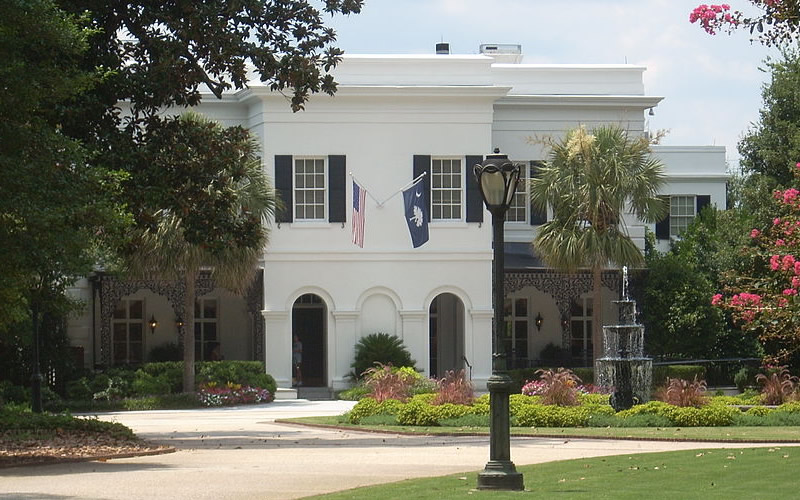

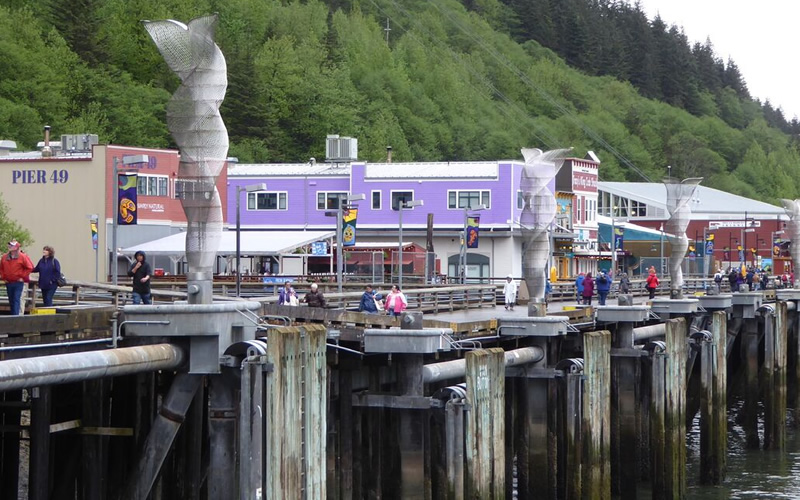
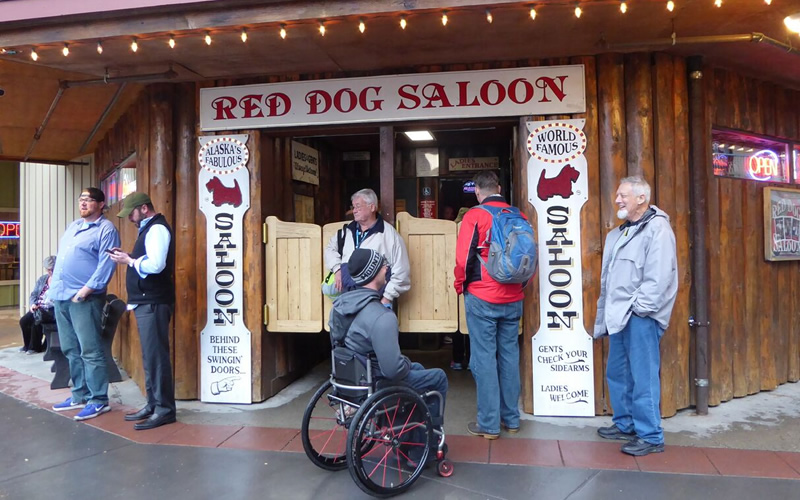
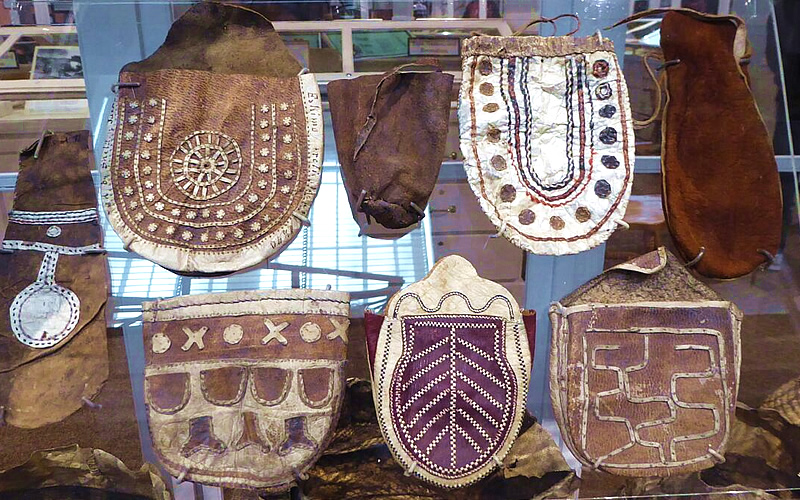

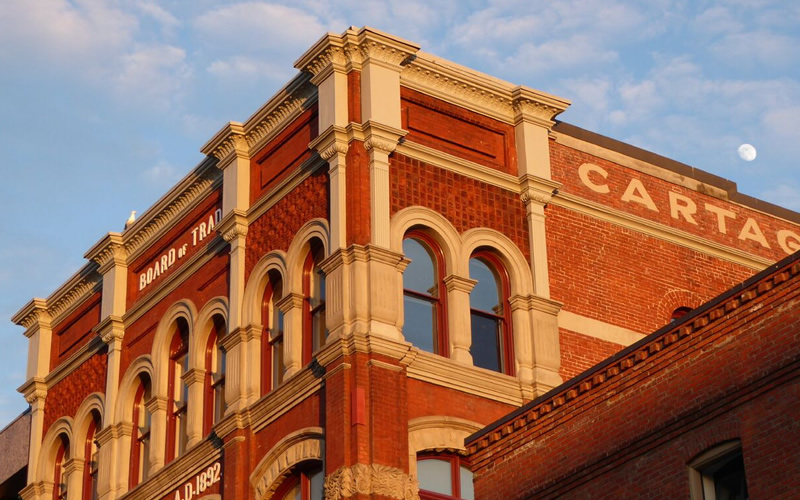


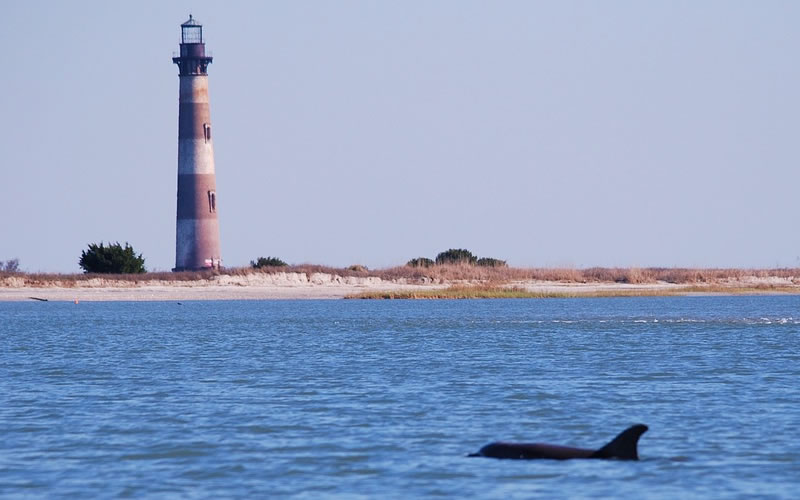
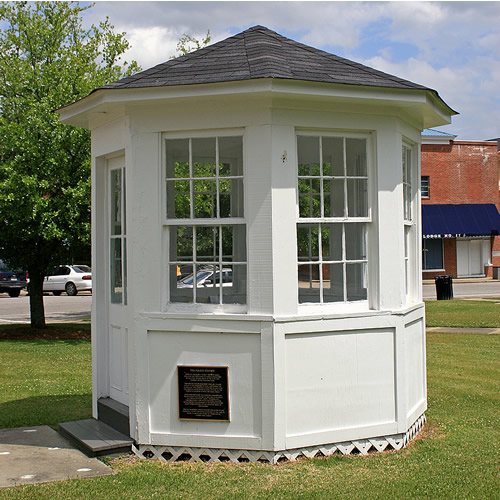

 We Can Do Better, South Carolina!
We Can Do Better, South Carolina!

























Pingback: Charleston Businessworks News for 06-20-2018 – Charleston Businessworks